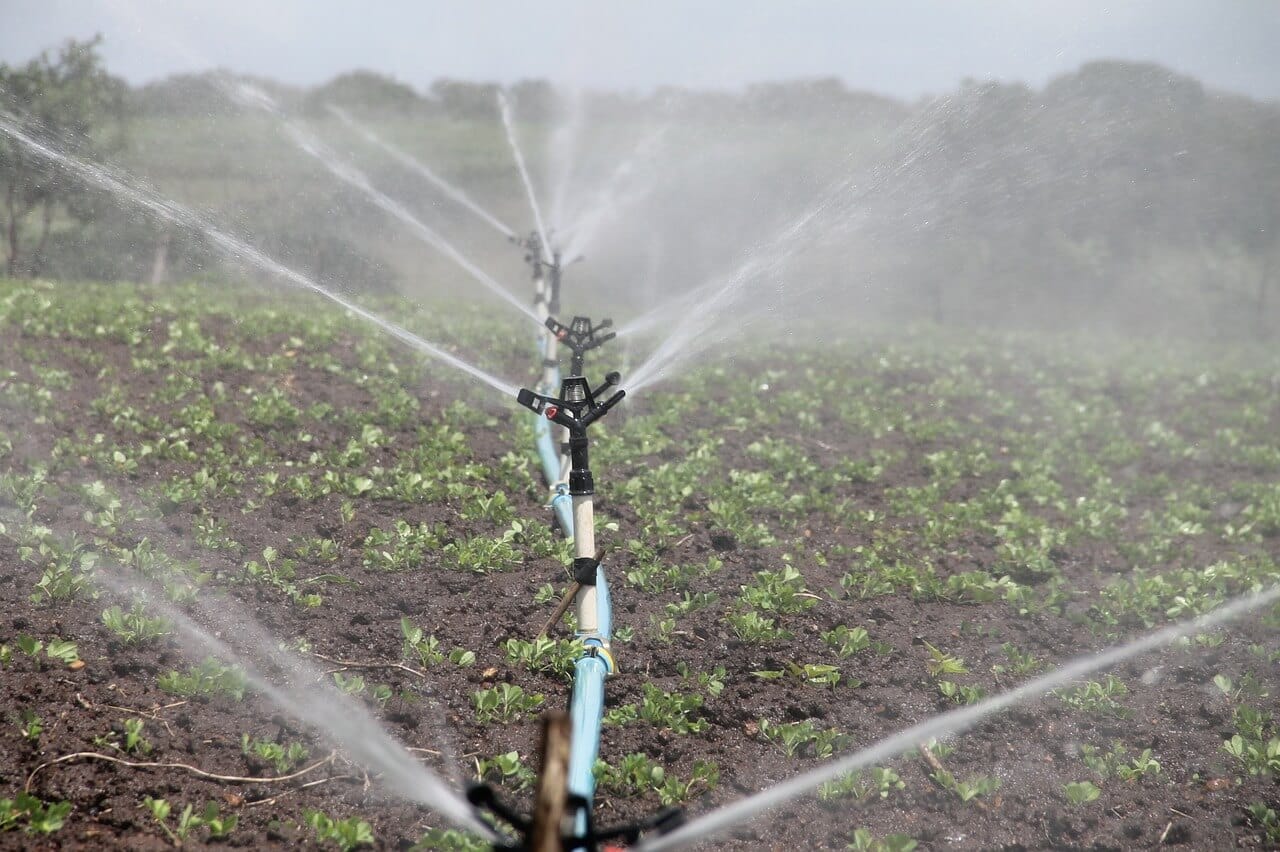Home>Gardening Basics>Understanding Soil>What Is Type B Soil


Understanding Soil
What Is Type B Soil
Published: February 6, 2024
Learn about type B soil and its characteristics. Understand the importance of soil types in construction and landscaping. Get insights on how to identify and manage type B soil effectively.
(Many of the links in this article redirect to a specific reviewed product. Your purchase of these products through affiliate links helps to generate commission for Chicagolandgardening.com, at no extra cost. Learn more)
Table of Contents
Introduction
Understanding the nature of soil is crucial in various fields, from construction and agriculture to environmental conservation. Soil types are classified based on their properties, and one such classification is Type B soil. This classification plays a significant role in determining the appropriate construction methods and safety precautions in excavation and trenching activities. In this article, we will delve into the definition, characteristics, testing, and importance of understanding Type B soil.
The designation of Type B soil is a key aspect of the Occupational Safety and Health Administration (OSHA) regulations, which are aimed at ensuring the safety of workers involved in excavation and trenching operations. By gaining a comprehensive understanding of Type B soil, contractors, engineers, and workers can mitigate potential hazards and make informed decisions regarding the necessary protective measures and equipment.
Moreover, Type B soil classification is essential for engineers and geologists in assessing the soil's stability and load-bearing capacity for construction projects. By examining the characteristics and behavior of Type B soil, professionals can determine the most suitable foundation designs and construction techniques, thereby enhancing the safety and longevity of structures.
In the following sections, we will explore the defining characteristics of Type B soil, the methods for testing and identifying it, and the overarching significance of comprehending this soil type in various industries. Let's embark on a journey to unravel the intricacies of Type B soil and its far-reaching implications.
Definition of Type B Soil
Type B soil, as defined by OSHA, encompasses cohesive soils with an unconfined compressive strength of 0.5 tons per square foot (tsf) (48 kPa) or greater, but less than 1.5 tsf (144 kPa). Additionally, Type B soil includes granular cohesionless soils such as angular gravel, silt, silt loam, and sandy loam that exhibit a stable natural slope of 1.5 horizontal to 1 vertical or steeper.
Furthermore, Type B soil may also comprise previously disturbed soils, including those that are fissured or near sources of vibration, as well as soils located adjacent to a sloped, open excavation. The classification extends to cohesive soils with an unconfined compressive strength greater than 0.5 tsf that are part of a sloped, layered system where the layers dip into the excavation on a slope less steep than 1.5 horizontal to 1 vertical.
It is important to note that the classification of Type B soil is not solely based on the soil’s physical properties but also considers its behavior and the potential hazards associated with excavation and trenching activities. The presence of water, weather conditions, and the soil’s response to external forces are crucial factors in determining its classification as Type B.
Understanding the precise definition of Type B soil is essential for professionals in the construction, engineering, and safety industries. By recognizing the specific characteristics and limitations of Type B soil, individuals can implement appropriate safety measures and excavation techniques to mitigate potential risks and ensure the well-being of workers.
Characteristics of Type B Soil
Type B soil exhibits distinct characteristics that influence its behavior and pose unique challenges in excavation and construction activities. Cohesive Type B soil, with an unconfined compressive strength ranging from 0.5 to 1.5 tons per square foot (tsf) (48 to 144 kPa), displays cohesive properties due to the presence of clay and silt particles. These cohesive soils tend to retain their shape when excavated and can create stable, near-vertical walls in an open excavation.
Granular cohesionless soils, including angular gravel, silt, silt loam, and sandy loam, are also classified as Type B soil if they exhibit a stable natural slope of 1.5 horizontal to 1 vertical or steeper. Unlike cohesive soils, granular soils lack cohesive properties and are prone to shifting and sliding when excavated, necessitating specialized excavation techniques and support systems to maintain stability.
Additionally, previously disturbed soils, such as those near vibration sources or adjacent to open excavations, fall under the Type B classification. These soils may have compromised stability and can pose significant risks during excavation, requiring careful assessment and reinforcement measures to ensure worker safety.
Another characteristic of Type B soil is its potential for instability when exposed to environmental factors such as water infiltration, changes in moisture content, or variations in loading conditions. The response of Type B soil to these external influences can significantly impact its stability and load-bearing capacity, emphasizing the need for thorough testing and analysis before commencing construction or excavation activities.
Understanding the specific characteristics of Type B soil is instrumental in formulating effective excavation and construction strategies. By recognizing the cohesive or granular nature of the soil, its stability under various conditions, and the potential risks associated with previously disturbed soils, professionals can implement tailored safety measures and engineering solutions to address the challenges posed by Type B soil.
Testing and Identification of Type B Soil
Accurate testing and identification of Type B soil are essential for ensuring the safety and stability of excavation and construction operations. Several methods and considerations are employed to determine the classification of soil as Type B, enabling professionals to implement appropriate safety measures and construction techniques.
One of the primary methods for identifying Type B soil involves conducting a thorough analysis of the soil’s physical properties, including its cohesion, angle of repose, and moisture content. Cohesive soils with an unconfined compressive strength between 0.5 and 1.5 tons per square foot (tsf) (48 to 144 kPa) exhibit cohesive properties, while granular cohesionless soils with stable natural slopes of 1.5 horizontal to 1 vertical or steeper fall under the Type B classification.
Furthermore, engineers and geotechnical professionals utilize specialized testing equipment to measure the soil’s strength, density, and permeability, providing valuable insights into its behavior and load-bearing capacity. Standard penetration tests, vane shear tests, and triaxial compression tests are among the commonly employed methods for assessing the engineering properties of Type B soil.
Field observations and visual inspections also play a crucial role in the identification of Type B soil. Professionals assess the soil’s stability, presence of fissures, response to excavation, and proximity to vibration sources to determine its classification. Additionally, the assessment of natural slopes and the soil’s behavior in open excavations aids in accurately identifying Type B soil and formulating appropriate risk management strategies.
It is imperative to consider environmental factors such as water content, weather conditions, and the potential for soil disturbance when testing and identifying Type B soil. These factors can significantly influence the soil’s stability and behavior, necessitating comprehensive evaluations and adaptive measures to address the dynamic nature of Type B soil.
By employing a combination of rigorous testing, visual inspections, and environmental assessments, professionals can accurately identify Type B soil and implement tailored safety protocols and construction methodologies to mitigate the inherent risks associated with this soil classification.
Importance of Understanding Type B Soil
Comprehending the characteristics and behavior of Type B soil holds immense significance in various industries, particularly in construction, engineering, and occupational safety. The following points underscore the importance of understanding Type B soil:
- Worker Safety: Type B soil classification directly impacts the safety of workers involved in excavation and trenching activities. By understanding the potential hazards and stability challenges posed by Type B soil, employers and workers can implement appropriate protective measures, such as shoring, sloping, or shielding, to mitigate the risks of cave-ins and soil collapse.
- Structural Integrity: For construction and engineering professionals, a thorough understanding of Type B soil is crucial for assessing the soil’s load-bearing capacity and stability. This knowledge enables the design and implementation of suitable foundation systems and structural support to ensure the longevity and safety of buildings and infrastructure built on Type B soil.
- Regulatory Compliance: OSHA regulations mandate the identification and classification of soil types, including Type B soil, to enforce safety standards and guidelines for excavation and trenching operations. Compliance with these regulations is contingent on accurately recognizing and addressing the challenges associated with Type B soil.
- Risk Mitigation: By understanding the unique characteristics of Type B soil, construction and safety professionals can proactively mitigate the risks associated with excavation in such soil. Through comprehensive risk assessments and tailored safety protocols, potential hazards can be identified and effectively managed, ensuring a secure working environment.
- Project Planning and Cost Management: Knowledge of Type B soil influences project planning and cost estimation. Understanding the soil’s behavior and stability aids in formulating realistic project timelines, optimizing excavation methodologies, and allocating resources for safety measures, thereby contributing to efficient project management and cost control.
The importance of understanding Type B soil extends beyond regulatory compliance and safety considerations; it fundamentally shapes the approach to construction, excavation, and worker welfare. By recognizing the significance of this soil classification and its implications, professionals can proactively address the challenges posed by Type B soil, fostering a culture of safety, innovation, and informed decision-making in diverse industries.
Conclusion
In conclusion, the classification of Type B soil plays a pivotal role in shaping safety protocols, construction methodologies, and engineering practices. By understanding the defining characteristics, testing methods, and overarching significance of Type B soil, professionals across various industries can effectively navigate the challenges associated with this soil type.
From cohesive soils with specific compressive strengths to granular cohesionless soils exhibiting stable natural slopes, the diverse nature of Type B soil necessitates tailored approaches to excavation, shoring, and structural design. Rigorous testing, visual inspections, and environmental assessments are integral to accurately identifying Type B soil and implementing appropriate safety measures.
The importance of understanding Type B soil resonates in its impact on worker safety, structural integrity, regulatory compliance, risk mitigation, and project planning. By recognizing the implications of this soil classification, professionals can proactively address the challenges posed by Type B soil, fostering a culture of safety, innovation, and informed decision-making.
Ultimately, the knowledge and proactive management of Type B soil contribute to the creation of secure working environments, structurally sound buildings, and efficient project management practices. As industries continue to evolve, the understanding of Type B soil remains a cornerstone of safety, sustainability, and excellence in construction and engineering endeavors.






